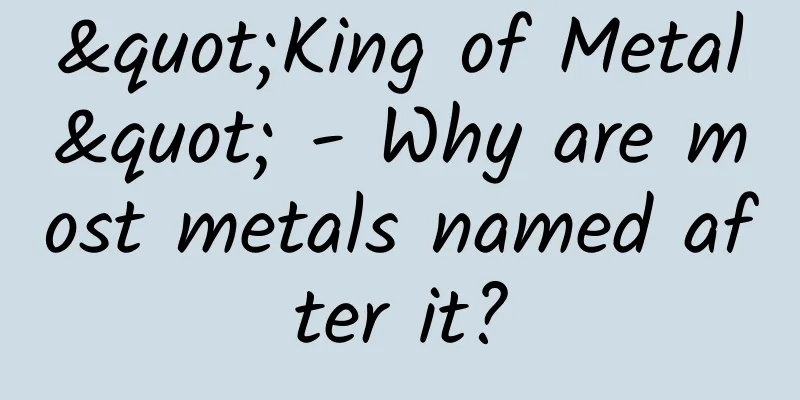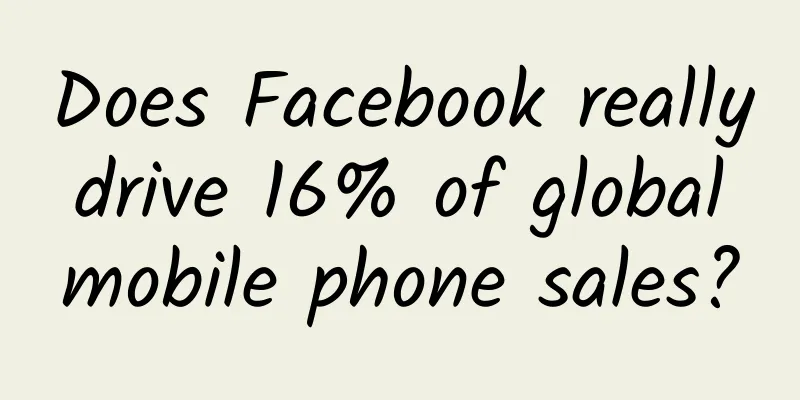"King of Metal" - Why are most metals named after it?

|
Gold is a popular precious metal that is so valuable that it has long been used as currency, jewelry, and more. Gold is not the rarest or most expensive, but it is the easiest to preserve, and most other metal materials are overshadowed by it. In fact, gold is one of the most versatile materials on earth. In addition to its uses as jewelry and currency, gold is also used in many fields, such as printing, photography, spacecraft, jet engines, nanotechnology, paint, cooking, and medicine. In nature, gold appears in the form of gold nuggets or gold grains in rocks and in underground veins and alluvial deposits. Gold is solid at room temperature, has a high density, is soft, shiny, and corrosion-resistant, and has the highest ductility of any known metal. 1. The dominance of “gold” In the ancient Chinese discussion of the "Five Elements" (gold, wood, water, fire, and earth), one theory is that gold is the first of the five elements. Gold: When gold is strong, it needs fire to become a vessel. Gold can produce water. Too much water will sink gold. Strong gold can be blunted by water. Gold can overcome wood. Too much wood will weaken gold. When wood is weak and meets gold, it will be cut. Gold depends on earth for its growth. Too much earth will bury gold. Earth can produce gold. Too much gold will change the earth. There are many ways to classify matter on Earth, one of which is shown in Figure 1. From Figure 1, we can see that: simple substances can be divided into metal simple substances and non-metal simple substances; oxides can be divided into metal oxides and non-metal oxides (in fact, alkalis and salts also contain metal elements, and some organic compounds also contain metal elements). The classification of substances is completely based on "gold". The "wood" and "earth" in the five elements mentioned above are also substances, but we will not classify substances into "wood simple substances" and "non-wood simple substances"; nor will we classify them into "earth oxides" and "non-earth oxides". This is enough to show the dominance and status of "gold" on the earth. There are more than 110 elements in the modern chemical periodic table. How many of them are metal elements? Because the number of radioactive elements is uncertain, the number of metal elements is uncertain. But it is generally believed that except for No. 1 H hydrogen, No. 2 He helium, No. 5 B boron, No. 6 C carbon, No. 7 N nitrogen, No. 8 O oxygen, No. 9 F fluorine, No. 10 Ne neon, No. 14 Si silicon, No. 15 P phosphorus, No. 16 S sulfur, No. 17 Cl chlorine, No. 18 Ar argon, No. 33 As arsenic, No. 34 Se selenium, No. 35 Br bromine, No. 36 Kr krypton, No. 52 Te tellurium, No. 53 I iodine, No. 36 Kr krypton (a total of more than 20 elements), the others are metal elements. In short, metal elements occupy most of the periodic table. Figure 1 Classification of substances From the two examples of the classification of substances and the periodic table of chemical elements, we have already understood the importance of metals. So, what is the status of "gold" among metal elements? It can be said that metals can be divided into "gold" and others. First of all, from the name, gold is just the word "gold", while other metals are composed of other words (or radicals) added to the right of "gold". In addition, this large category of elements is called the "gold" genus, rather than the "silver" genus, "copper" genus, etc. Secondly, from the perspective of Chinese character shape, Chinese characters can be divided into single-character and compound-character. "金" is a single-character character. The Chinese characters for other metal elements are basically compound-character characters with a left-right structure. The biggest feature of Chinese characters representing metal elements is that the element names all have "钅" (except mercury, which is a liquid metal). In a sense, other metals can be considered as "extensions" and "derivatives" of "gold". Because gold is rare and precious, people give it the title of "king of metals" among the five metals (gold, silver, copper, iron and tin). This shows the dominance of "gold". 2. Gold is everywhere "Gold" is closely related to us and is everywhere in our lives. Idioms are a major feature of Chinese traditional culture. A large part of them are inherited from ancient times and represent a story or allusion. Idioms are a shining pearl in Chinese culture. Let's take a look at the widespread existence of "gold" in idioms. 2.1 About life The best time in life is often called the "golden years". The most precious and valuable period of life is often called the "golden age". The "golden years" are used to describe the good old days when people recall them with nostalgia. Young men and women of noble birth can be called "golden branches and jade leaves". "Golden boy and jade girl" is often used to describe innocent boys and girls. A happy marriage is often described as "a perfect match made in gold and jade". If one passes the imperial examination, it is called "a name on the golden list". The golden list refers to the list of results of the palace examination in the imperial examination era, and the name on the list refers to writing one's name on the list, Figure 2. Figure 2: Successful candidates on the list (Picture from the Internet) 2.2 War and Military Power When describing the heroic posture of a soldier, we often use “golden weapons and iron armor” or “golden weapons and iron horses”. When the military is powerful and the battle is going on, we will see the scene of “drums beating”. When describing a city or position that is extremely strong and difficult to break through, we will use “as solid as a rock” or “golden city and hot spring”. “Golden city” refers to the metal-cast city wall, and “hot spring” refers to the boiling water of the moat. 2.3 Food, clothing, housing and transportation "Jinjingyuye" or "Jadeyejinbo" refers to precious wine or drinks. "Cooking gold and jade" is used to describe sumptuous dishes. "Wearing gold and silver" is used to describe gorgeous clothing. "Golden and brilliant" is often used to describe buildings and other places with bright and gorgeous colors and dazzling brilliance. "Golden and brilliant" refers to the color of golden and green. "Jade towers and golden palaces" is also used to describe magnificent buildings, Figure 4. Exquisite and beautiful pavilions and palaces or places where immortals live are also called "Jade Towers and Golden Palaces". The surface of the objects is decorated with different lusters, which complement each other, making the patterns and inscriptions particularly gorgeous and elegant. The color contrast, decorative lines are more vivid, and the artistic image is more vivid. This can be called "inlaid gold and silver". Figure 4 Qionglou Jinque (picture from the Internet) 2.4 Interpersonal communication When a person is very trustworthy, it can be said that "a promise is worth a thousand gold". Extremely rare and precious words, or words that cannot be changed, are called "golden words". And "golden and jade good advice" refers to advice or teachings as valuable as gold and jade. When you make friends who are very compatible with you, it is called "righteousness" or "golden orchid's covenant", Figure 5. "Golden and stone friendship" or "golden and stone prolong life" is used to describe a friendship that is as unbreakable as gold and stone. "The power of public opinion is strong enough to melt metal." It means that everyone says the same thing, and its power is enough to melt metal. Figure 5: Sworn brotherhood (picture from the Internet)2.5 Dignity and Nobility "A moment is worth a thousand gold" is used to describe that time is very precious. We call the rules and regulations that cannot be changed "golden rules". "A thousand gold is hard to buy" means that the items are precious and cannot be bought with money. We praise the character of not taking money or valuables for oneself when picking them up as "not keeping them". When describing a lot of wealth or rich knowledge, we can use "a house full of gold and jade", Figure 6. "A golden seal like a bucket" is often used to describe a high official position and outstanding achievements. "Golden teeth and iron teeth" is used to describe old age and good health, referring to strong teeth, like gold and iron. "Southern gold and eastern arrows" is used to describe excellent talents, meaning the gold and stone in the south and the bamboo arrows in the east. We often say "an inch of land is worth a lot of gold", which means that the land has extremely high returns and is extremely valuable. When praising strong or correct people or things that can stand the test, we say "real gold is not afraid of fire". In the old days, a particularly noble body was called "a body worth a million gold". "A good medicine worth a million gold" refers to a very expensive good medicine. “Fire eyes and golden pupils” refers to the ability to see through everything. “Silence is golden” means that people who don’t talk often are more likely to succeed. Figure 6: A House Full of Gold and Jade (Picture from the Internet) 2.6 Poetry, calligraphy and painting The extremely precious and rare calligraphy and painting supplies are called "golden pot ink". "Jinyu splitting the sea" (jīn zhī bò hǎi) is usually used to describe the vigorous and profound poetry and prose. The sonorous language and writing can be described as "golden sound falling to the ground". "Good gold and beautiful jade" is a metaphor for the perfection of the article, and also a metaphor for the excellent moral character of people. "One word is worth a thousand gold" is to praise the exquisiteness and high value of poetry and prose (Figure 7). It originated from the fact that Qin Xiang Lü Buwei asked his followers to write "Lüshi Chunqiu". After the book was completed, he issued a notice that anyone who could add or delete a word would be rewarded with a thousand gold. The exquisite articles with strict structure can be called "cù jīn jié xiù" (cù jīn jié xiù). The beautiful poems with loud syllables can be described as "clanging gold and jade". The wind instruments with gorgeous carvings are also related to gold, and are called " jade flute and golden tube ". "Cherishing ink like gold" or "Cherishing words like gold" means that writing, painting, and writing articles is very cautious and strives to be concise. Figure 7: A word is worth a thousand gold (picture from the Internet) 3. The nobility of gold Everyone knows that gold is precious. But is gold the most expensive metal (or material)? No! The most expensive element in the world is californium (Cf), 1 gram of which is worth 20 million US dollars, about 400,000 times the price of gold. So why do people think that gold is precious and collect it? 3.1 Historical reasons The history of gold is almost as old as the history of mankind. The craze for gold began when gold was discovered more than 12,000 years ago. Humans began to use gold long before the Bronze Age, and gold began to write its glorious history. It is no exaggeration to say that the substance that best embodies purity and holiness in the world is gold. Gold is a noble substance that rules the world. It has long become a flowing bloodline that transcends races, countries, and cultures and runs through the entire human history. It can still maintain its status as the "king of metals" today. Figure 8 shows the golden mask worn by the Egyptian Pharaoh Tutankhamun after his death. It is made of gold foil and inlaid with gems. It is verified that it was made around 1223 BC. Figure 8 Tankhamun's Golden Mask (picture from the Internet) The isotope of the world's most expensive element, californium-252, was first discovered in the dust after a hydrogen bomb explosion. In 1968, a medical californium source was used to treat the first patient. Compared with gold, it is too young! 3.2 Awareness More than 99.99% of people in the world know about gold, but more than 99.99% of people don’t know about californium. Gold has very good chemical stability. "True gold is not afraid of fire" means that gold has high chemical stability and is not easy to react chemically with other substances. There is no need to worry about it oxidizing and changing color. Even in a molten state, it will not oxidize and change color. After cooling, it will still be golden. In the metal market, gold and ruthenium, rhodium, palladium, osmium, iridium, platinum and other metals are collectively referred to as precious metals. Gold has a high density, feels heavy, soft, pure texture, beautiful color, and has good ductility and forgeability. Gold is very valuable. At the same time, the total amount of loss is small during the recycling process, so the recycled gold has a very high reuse value. Gold has been used as currency since ancient times. The earliest known place to use gold as currency was Lydia, where coins were made in the form of an alloy of gold and silver around 700 BC. In ancient China in the 6th century BC, a gold coin called Yingyuan circulated in the fiefdom of the Chu State. In 1422, the Venice Mint used gold to mint gold coins (Figure 9), which quickly became popular because they were easy to carry and represented greater value. Figure 9 Gold coins minted by the Venice Mint (picture from the Internet) In 1985, gold preparations were used as basic drugs for the treatment of arthritis. It is now generally recognized that gold preparations are effective in treating rheumatoid arthritis. Commonly used gold preparations include gold sodium thiomalate. In 2001, gold-plated stents were used in cardiac surgery (Figure 10). Vascular stents are placed in blood vessels to support narrowed and occluded segments of blood vessels and maintain smooth blood flow in the lumen. Metal stents can be made of tantalum, medical stainless steel, and nickel-titanium alloys, but all of them have unstable surfaces. By gold plating, the inertness of gold is used to isolate the surface of the stent material from the surrounding environment, making the stent more stable. Gold-plated stents have achieved remarkable results after clinical treatment.
Gold is a popular precious metal that has been used as currency, a store of value, and jewelry since ancient times. For centuries, gold has been a symbol of wealth and a favorite decoration. Although its price fluctuates with various factors, it has always been a precious metal. Gold has good chemical stability and is very corrosion-resistant: gold does not react with oxygen at room temperature, and only heating and other processes can produce gold oxide; gold can only be dissolved in highly corrosive solutions such as aqua regia, selenic acid, and perchloric acid. In addition, gold is not easy to wear and is easy to store. Although gold is not the rarest or most valuable, it is the easiest to preserve. Gold is used as a world currency reserve. The economic value of gold itself makes it play a special role in the fields of finance and currency, political life, social culture, etc., such as circulation, value preservation, investment, collection, decoration, appreciation, value embodiment, etiquette communication, etc. Also, for ordinary people, gold can be said to be "priced and in demand". If you have gold on hand, you can convert it into cash almost at any time. But californium, which is thousands of times more expensive than gold, can be described as "priced but not in demand". Imagine if someone has 1 mg of californium (of course this is just an assumption), according to the price of californium, it should be able to sell for $20,000. But who should they sell it to, and can they sell it? It is the historical reasons of human society, people’s level of cognition, the stability and value preservation of gold and other factors that lay the foundation for the noble value of “gold”. 4. Conclusion As a symbol of beauty, "gold" is everywhere in people's lives. Gold has a long history, good recognition, noble value and stable value preservation, which determines its status as the "king of metals". About the author: Jia Chengchang, professor and doctoral supervisor at Beijing University of Science and Technology. Graduated from the Department of Metal Materials of Beijing Iron and Steel Institute in 1982 with a bachelor's degree. Obtained a master's degree from Tohoku University in Japan in 1987. Obtained a doctorate from Tohoku University in Japan in 1990. Postdoctoral fellow and chief engineer at Kanagawa Science City, Japan from 1990 to 1994. Won more than 20 national invention patents. Published more than 200 papers in domestic and foreign academic journals, including 76 SCI-indexed papers and 127 EI-indexed papers, and a single article has been cited more than 100 times. Edited 15 academic monographs: "Composites Tutorial", "Introduction to Ceramic Matrix Composites", "Sintered Metal Oil-bearing Bearings", "Introduction to Metal Matrix Composites", "Superhard Materials and Tools", "Metal Powder Gel Injection Molding", "Sintering Theory and Practice", "Professor Han Fenglin's Papers", etc. He has won the second prize of Science and Technology Progress of the Ministry of Education, the first prize of Excellent Textbooks of China Metallurgical Education Association, the first prize of National Teaching Achievement in Higher Education, the first prize of Education and Teaching Achievement of Beijing, the second prize of Excellent Journal of China Nonferrous Metals Society, the Outstanding Worker of China Metal Society, the Outstanding Instructor of the "Challenge Cup" National College Student Science and Technology Competition, the Outstanding Editorial Board Member of "Journal of Composite Materials" of the Composite Materials Society, "I Love My Teacher - the Best Teacher in My Mind" of Beijing University of Science and Technology, Advanced Individual in Teacher Ethics, Outstanding Party Member, Advanced Worker, First Prize for Teaching Achievement, SCI Inclusion Award for Scientific Papers and other honors. Main social part-time jobs: Director of China Composite Materials Society, Vice Chairman and Secretary General of Powder Metallurgy Branch of China Metal Society, Executive Director of Powder Metallurgy Branch of China Mechanical Engineering Society, Director of Powder Metallurgy and Ceramics Branch of China Nonferrous Metals Society, Honorary Director of Powder Metallurgy Branch of China Steel Structure Association, Distinguished Expert of China Nonferrous Processing Association, Director of Powder Branch of China Building Materials Industry Association, Distinguished Expert of Powder Metallurgy Branch of China Machinery Association, Editorial Board Member of Journal of Composite Materials, Editorial Board Member of Powder Metallurgy Technology, Editorial Board Member of Powder Metallurgy Industry, Editorial Board Member of China Molybdenum Industry, Editorial Board Member of Powder Metallurgy Materials Science and Engineering, Editorial Board Member of China Materials Science and Equipment, Guest Contributor of Metal World |
>>: Someone specializes in collecting human brains: Scientists uncover the mystery of gray matter
Recommend
"I grind my teeth in my dreams!" Where does bruxism come from?
(Photo courtesy of TUCHONG Creative) Where is the...
This vaccine you got as a child can actually fight Alzheimer's disease?
More than 100 years ago, Calmette and Gering'...
3 common scenarios for community operations!
First of all, we must make it clear that a commun...
China Association of Automobile Manufacturers: Brief analysis of passenger car production and sales in March 2022
According to statistics and analysis by the China...
The women and men behind Jack Ma
Alibaba's brilliant victory on Double 11 once...
5 seemingly good habits that save money may actually increase the risk of cancer!
"It takes time for ice to freeze three feet ...
Tik Tok short video eight resources video tutorial
Tik Tok short video eight resources video tutoria...
The former Land Rover design director joined Great Wall Motors. How will the styles of Haval and WEY change?
Great Wall recently issued a statement on its off...
The naming logic of kings in ancient times: Why were they King of Qin and King of Zhao before Ming Dynasty, but Prince Gong and Prince Li in Qing Dynasty?
This article is about 3800 words Reading time: 10...
LeTV Game Hall previews perfect cross-screen experience to create a complete TV game
Although smart TVs account for an increasing shar...
The first version of 5G international standards will be completed in June: China takes the lead
The promotion of 5G is in full swing, but don’t f...
The standard for franchise service in the automotive aftermarket is released. The chain ratio of the automotive aftermarket in China is much lower than that in the United States and Japan.
Recently, at the "2018 China Franchise Confe...
Can’t tell the difference between information flow advertising, DSP, ad networks and SEM?
Many people don’t know the differences between in...
Android M system will natively support fingerprint recognition
[[134716]] On the morning of May 22, Google I/O c...









